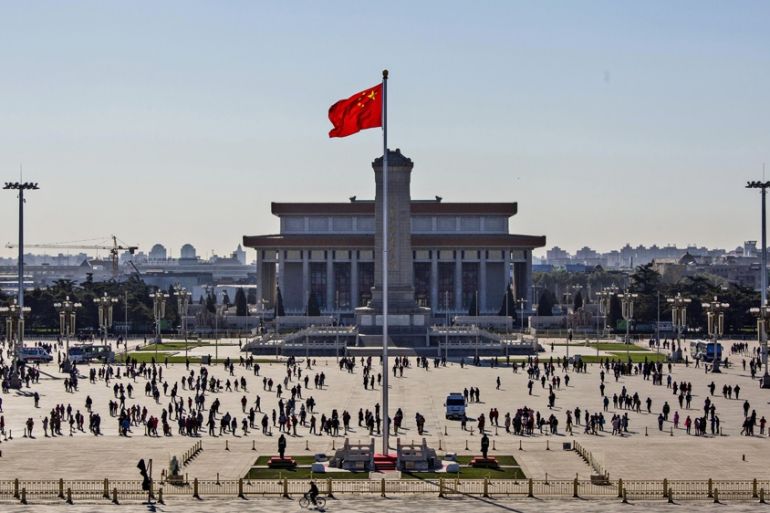Smog-stricken Beijing brightens up
After a dangerously thick smog, a visible sky was a welcome change in China’s capital.

Blue skies have returned to Beijing after the wind picked up, bringing in cold and dry air from the Russian steppe.
Beijing’s air quality worsened towards the end of November, culminating in an air quality reading of 611 parts per million. Particle pollution is incredibly hazardous to health, and even more so at these extraordinarily high levels. The World Health Organisation says any reading greater than 300ppm is hazardous and its scale doesn’t go beyond 500 – so 611ppm is off the charts.
Keep reading
list of 4 itemsAfter the Hurricane
World’s coral reefs face global bleaching crisis
Why is Germany maintaining economic ties with China?
Beijing’s surrounding geography makes it prone to high levels of pollution during spells of settled weather. Pollution from power stations, industrial activity, and transport all collects over the plain with nowhere to go.
The government issued an orange alert on Sunday, requiring industrial plants and construction sites to either cut back or shut down work.
It was something of a relief, then, when the wind blew over the mountains and swept the city clean late on Tuesday. Visibility in the city on December 1 was below 100 metres and headlights were necessary at noon. Twenty-four hours later, the sky was gorgeously blue and visibility was greater than 30km.

Curiously, it wasn’t as cold either, despite this being Arctic air, as the sun could now shine through. The previous smoggy days had wallowed around freezing but after the change, dawn brought in warming sunshine.
This improvement in fortunes was brought about by a cold front, which did what its name implied, elsewhere in North Asia. The Korean peninsula suddenly got colder and saw snow; Pyongyang has been sub-zero since Wednesday and Seoul received its first proper snowfall.
Japan’s two main islands have felt the change, too, with substantial rain in western Honshu, snow in the mountains and yet more snow in Hokkaido.
In fact, it has been raining and getting steadily colder in Fushiki, Toyama prefecture, on Honshu’s west coast since Tuesday evening. Obihiro, in Hokkaido, now has 23cm of snow on the ground, despite being only 38 metres above sea level.
At the end of the front is a storm centre where the heaviest snow has fallen. Khabarovsk is just over the Chinese border and across the sea from northern Japan and is in the eye of this storm. It has been enduring a blizzard and now has 19cm of snow on the ground.
Winter weather has arrived in northern Asia and is unlikely to retreat until spring. Unfortunately, that doesn’t mean that Beijing will remain free of smog. Indeed, settled winter weather can bring the worst conditions.
|
|
| Dangerous smog levels choke China’s Baoding |